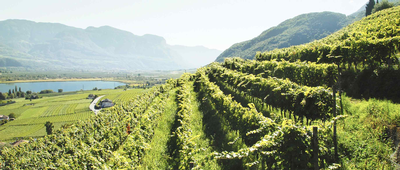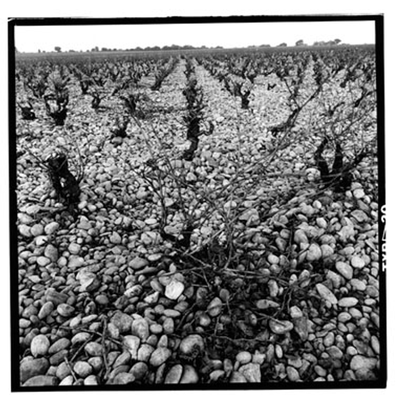Our blog was created to help make the world of wine and beer easier to understand and fun to navigate. There are a million things to know in this industry, we just want to help you understand the latest news and trends from around the globe. So sit back with your favorite sip and let's go on an adventure.
Headlong into Summer: Panzanella and Italian Wine for Long Evenings
Tuscan Sangiovese at Salvioni la Cerbaiola
"Only two things money can't buy,
That's true love and homegrown tomatoes."
- Guy Clark
There will come a point this summer when someone you care about will offer you a garbage bag full of ripe tomatoes. You will take the bag, thank them, and promptly make yourself a BLT, or an A(vocado)LT if you don’t eat meat, or a T(urkey)BLAT if you like attempting to eat sandwiches that are too tall to eat. In the following days, maybe you’ll enjoy your tomatoes plain, just sliced with a little olive oil, flaky salt, and black pepper. Perhaps there is a Caprese salad or two in your future. Somehow, you’ll whittle your way through the giant pile of lovingly-grown tomatoes, thanking your friend with every ruby slurp. How did you make it through the previous 3 seasons without a real, ripe tomato?
There will also come a point this summer when that same loved one will show up on your doorstep with an even larger “put the money in the bag” bank robbery-style duffel filled to the brim with tomatoes that are approximately 27-minutes from overripe. There will probably be a cloud of fruit flies, and your friend will have a wild, desperate look in their eyes. Today is the day - you’ll think - break out the confetti. We have reached Peak Tomato.
It happens every year. Driven mad by 6+ consecutive months without a decent tomato, amateur gardeners throughout town will plant an array of heirloom varieties, filling their yards/garden boxes/highway medians to the brim. “Look how tiny those seeds/starts are,” they’ll think, forgetting the tomato leaf jungles of the previous summer, “I should put in a few more.” The tomatoes will grow tall and heavy in the Walla Walla sun, propped and cradled by cages like deliciously swaying suspension bridges.
This year’s quarantining has led to an explosion of gardening. Everyone has been trapped at home with images of empty supermarket shelves. I don’t mean to be alarmist, but I’m predicting a Peak Tomato season the likes of which this county has not seen in decades. Luckily, many folks have also been experimenting with bread baking. Tomatoes + Homemade Bread + a few odds and ends = Panzanella! Panzanella is a Tuscan bread and tomato salad that is delicious, easy to make, and infinitely customizable. Toss in some cheese, omit the olives, trade the basil for some other leafy herb, add some arugula, etc. As long as you’ve got tomatoes, a country loaf, and good olive oil, you’re set. It’s never too early to prepare for Peak Tomato!
Pair your Panzanella with a medium-bodied, Sangiovese-based wine from Tuscany, like the ones found in our Italian six-pack. Sangiovese’s combination of red fruit flavors (especially cherry), fresh acidity, and savory balance of leather, clove, and yes, even tomato leaf, make it a fantastic pairing with homegrown tomatoes. As always, the original rule of wine pairing applies - drink what they drink in the region that the food is from.
Panzanella
1 loaf of homemade bread, regardless of how successful, cut into 1” cubes
15-20 basil leaves, torn or chiffonaded
1 cucumber
Some amount of homegrown tomatoes, up to and including 1 metric garbage bag full. (or, ya know, 2 of them), cut into bite sized chunks
½ red onion or 1 large shallot, thinly sliced
½ cup olives, halved and pitted (squish them with the back of your knife or a plate)
Kosher salt
Black Pepper
2 tablespoons red or white wine vinegar
At least 8 tablespoons olive oil, divided
1-2 cloves garlic, grated or otherwise smooshed
- Preheat your oven to 350F.
- Place your chunked tomatoes into a colander in the sink. Season with 1-2 teaspoons kosher salt, tossing to coat. Drain for at least 30 minutes. I found this technique on Serious Eats, and it really makes the difference between a crunchy Panzanella and a squishy one.
- Toss your bread chunks with 2 tablespoons of olive oil, then toast for 10 minutes on a baking sheet, or until crunchy and lightly browned. Set aside to cool.
- Cut your cucumber in half. Scoop out the seeds, then chop into bite sized chunks.
- In a bowl, whisk together your garlic, shallot, and wine vinegar. Drizzle in your remaining olive oil, whisking constantly, to form a dressing. Season with salt and pepper.
- Toss together your dressing, tomatoes, cucumbers, olives, basil, and bread. Adjust seasoning accordingly.
- Open your bottle of Sangiovese. You should know what to do next.
ITALIAN WINES FOR THE SUMMER 6-Pack, Shop HERE
Alois Lageder Terra Alpina Pinot Grigio 2018
- 100% Pinot Grigio
- Calcareous dolomitic limestone
- Vines mostly trained on pergolas
- Converting to organic viticulture
- Aged 4 months on lees
- Vegan
- Lemon, poached pear, white flowers
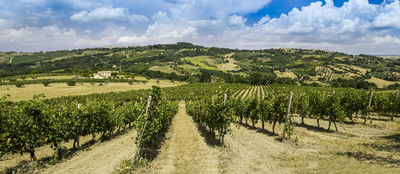
Umani Ronchi CaSal di Serra Verdicchio 2018
- Castelli di Jesi DOC
- 100% Verdicchio
- Organically grown
- Clay loam
- Fermented and aged in stainless steel on lees
- 91 points Wine Enthusiast
- Apricot, yellow apple, jasmine

Casanuova delle Cerbaie Rivale 2011
- Toscana IGT
- Just south of Montalcino
- 70% Sangiovese, 30% Merlot
- Mixed clay
- Aged 10 months in french oak
- Red cherry, fresh plum, leather
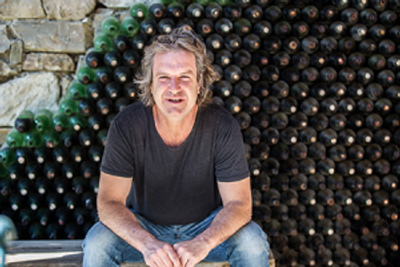
Bibi Graetz Casamatta 2018
- Toscana IGT
- 100% Sangiovese
- Translates to “crazy house”
- Fermented and aged 6 months in stainless steel
- 90 points James Suckling
- Raspberry, cherry, iron
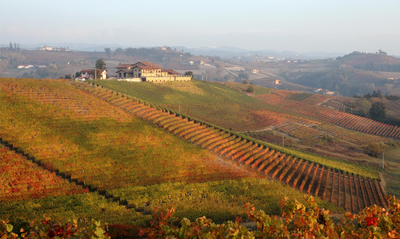
Pecchenino san Luigi 2017
- Dogliani DOCG
- 100% Dolcetto
- 25-35 year old vines
- Fermented and aged in stainless steel
- 92 points VM, 90 points W&S, 90 points James Suckling
- Blueberry, elderberry, lavender
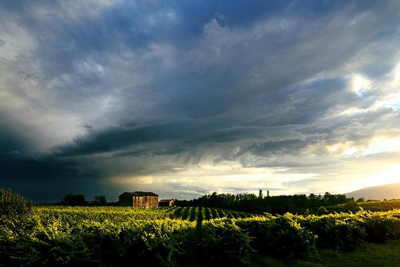
Sommariva Il Rosa Spumante Brut
- Just outside Prosecco Superiore
- 60% Raboso, 40% Pinot Nero (Noir)
- Clay soil
- Hand-picked, direct pressed
- Fermented and aged in stainless steel
- No malolactic
- 12g/l dosage
- Strawberry, honeydew melon, cucumber
Italian Wines for the Summer 6-Pack, Shop HERE
In Support of Walla Walla Wineries & Rosé 6-Packs
In Support of Walla Walla Wineries.
Our local wineries have lost out on more than two months of prime tourism due to COVID-19. Tasting rooms that often serve as a winery’s first introduction to new customers have been shuttered, and the restaurants that normally fly through local wines by the glass or bottle have been limited to takeout service. Luckily, working in the wine industry has always demanded creative solutions to unforeseen problems. “How am I going to fit five tons of fruit into that 3-ton press?” “What do I do with this Zinfandel rosé from a stuck fermentation?” “How do I make this steel container smaller?” (the answer to the last one was a big hammer). Most importantly, “How do I get my wine to consumers safely and efficiently in a time of social distancing?” Here are some inventive solutions from the wineries featured in our rosé six-packs. Please support our local wine community. These are all local business owners, but they’re also our neighbors and our friends.
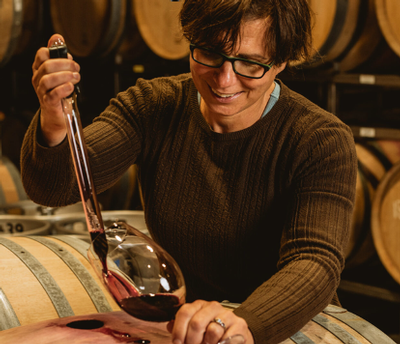
The Walls
The Walls is offering personal private tastings from home featuring 3-4 bottle flights (at a substantial discount), tasting notes, and a virtually led tasting. They are also offering $10 flat rate shipping on 6 bottle purchases.
509.876.0200
reservation@thewallsvineyards.com
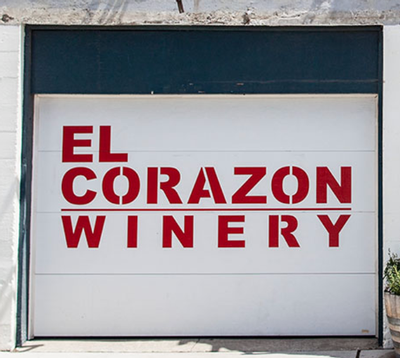
El Corazon
El Corazon’s tasting room will be open beginning June 5th. They have offered free shipping on 3+ bottle shipments to the Pacific Northwest, as well as curbside pickup and local delivery.
http://www.elcorazonwinery.com/
509.520.4408
info@elcorazonwinery.com
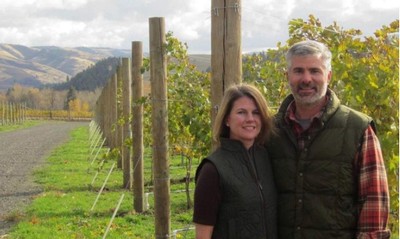
Aluvé
Aluvé is offering tastings at the winery with a scheduled appointment. They are adhering to the guidelines of Phase 2 with indoor or outdoor seating (weather permitting) for up to 4 groups of up to 5 guests. Appointments include a 45-minute tasting and zero contact checkout, with a 15-minute buffer for sanitizing before the next reservation.
509.520.6251
info@aluvewine.com

Gramercy Cellars
Gramercy has posted a Cayuse Weekend live tasting YouTube video to their website featuring co-winemakers Greg Harrington MS and Brandon Moss. Their tasting room will reopen for tastings June 5th with appointment, and there will be slots available Tuesday-Saturday.
509.876.2427
nichole@gramercycellars.com

College Cellars
College Cellars is offering a 20% case discount, as well at $10 flat rate shipping on packages of 6 bottles or more. They have not reopened their tasting room yet, but they are offering delivery to the Walla Walla area. Also, Sabrina Lueck has been posting some fantastically informative wine videos to her YouTube channel, and there is also a video of her sabering the sparkling Grenache using a roofing hammer floating around the interwebs.
509.524.5170
collegecellars@wwcc.edu
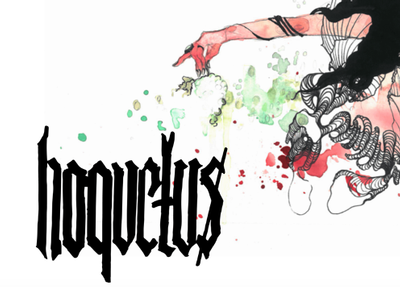
Hoquetus Wine Co.
Robert Gomez, winemaker for Hoquetus, has hosted several blind tastings on Instagram, including head to head battles with Time & Direction winemaker Steve Wells. Hoquetus is offering $20 flat rate shipping on 6+ bottle orders.
509.312.9148
info@hoquetuswine.com
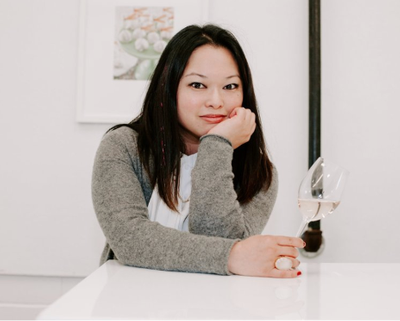
SMAK Wines
SMAK is offering free local delivery in Walla Walla, Dayton, Waitsburg, and Milton-Freewater, as well as curbside pickup. Their tasting room will reopen on June 5th under the guidelines of Phase 2.
509.629.9643
info@smakwines.com
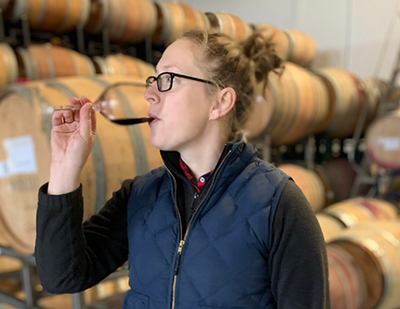
itä Wines
Itä’s new tasting room at the airport is now open to the public on Thursday-Sunday. Reservations are encouraged, but walk-ins will be accepted on a first-come basis. Folks can reserve a tasting on the website or by phone. They are offering $15 flat rate shipping on 6+ bottle purchases and free local delivery.
.509.593.9055
info@itawinery.com
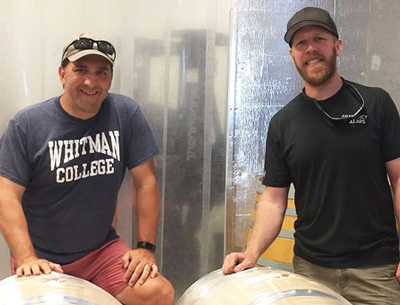
Prospice
Prospice is rolling out two different options for scheduled tasting appointments. They will offer a 45-minute seated tasting for groups up to 5, or a 75-minute cellar tasting hosted by one of the winemakers. They are also offering curbside pickup or Walla Walla area delivery for folks who would like to purchase without a tasting. They are waiving shipping on orders of more than $400.
509.204.3184
info@prospice.wine
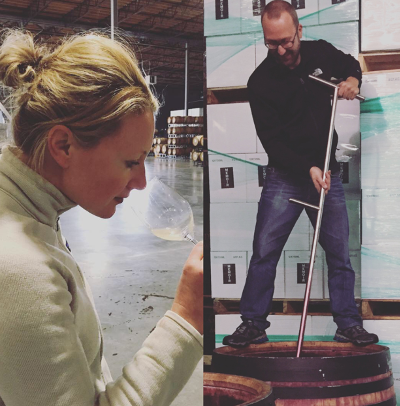
Grosgrain Vineyards
Grosgrain has gotten the message out with its first live-streamed interview and an assortment of options for consumers including curbside pickup, free local delivery, and $10 flat rate shipping. They are now open for scheduled appointments in their tasting room.
https://grosgrainvineyards.com/
509.876.4045
info@grosgrainvineyards.com
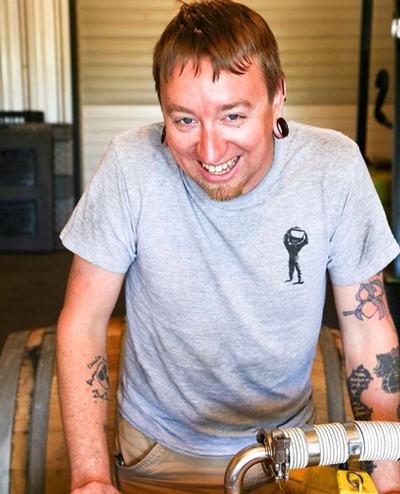
Lagana Cellars
Lagana is offering $10 shipping on 3 bottle purchases and free shipping on 6+ bottle orders. They are giving back to the community with a 5% donation to the BMAC food bank on all 6+ bottle purchases. Their tasting room is now open for walk-ins or scheduled appointments, and they will continue to offer curbside pickups and local delivery.
http://www.laganacellars.com/wp-data/
509.876.0001
jason@laganacellars.com
Walla Walla Rosé Six Packs Include:
PACKAGE #1 - SHOP HERE
Hoquetus Rosé 2019
- 100% Cabernet Franc
- Crushed, left on the skins for 6 hours
- Fermented in neutral oak for 8 weeks
- Blue Mountain Vineyard
- Walla Walla Valley AVA
SMAK Wines Spring Rosé 2019
- 100% Sangiovese
- Walla Walla Valley AVA
ïta Rosé 2019
- 100% Primitivo
- 6 hours skin-contact
- Fermented and aged in stainless steel
- Les Collines Vineyard
- Walla Walla Valley AVA
Prospice Rosé 2019
- 55% Syrah 25% Counoise 20% Grenache
- Fermented in stainless steel
- Aged 5 months in 80% stainless, 20% neutral oak
- Resurgent Vineyard (Syrah), Breezy Slope Vineyard (Counoise, Grenache)
- Walla Walla Valley AVA
Grosgrain Rosé 2019
- 100% Grenache
- Foot trod, whole cluster pressed
- Grown specifically for rosé
- Aged primarily in concrete egg
- Angiolina Farm
- Yakima Valley AVA
Lagana Rosé 2019
- 100% Pinot Noir
- Dijon Clone 115
- 92% stainless steel 8% acacia barrel
- Breezy Slope Vineyard
- Walla Walla Valley AVA
- 85 cases
PACKAGE #2 - SHOP HERE
The Walls Cruel Summer Rosé 2019
- 78% Grenache 28% Mourvédre
- Direct pressed
- Fermented and aged in stainless steel
El Corazon Red Frog Rosé 2019
- 100% Malbec
- Birch Creek Vineyard
XOBC Cellars Evangeline Rosé 2018
- 60% Syrah 40% Grenache
- 91 points Washington Wine Blog
- Rocks District of Milton Freewater AVA
Aluvé Rosé 2019
- 100% Sangiovese
- Seven Hills Vineyard
- Walla Walla Valley AVA
- 75 cases
Gramercy Cellars Rosé 2019
- 44% Cinsault 28% Grenache 28% Syrah
- Brief maceration before press
- Fermented and aged in stainless steel
- Grown specifically for rosé production
- Olsen Vineyard
- Yakima Valley AVA
- 93 points Washington Wine Blog
College Cellars Sparkling Rosé 2018
- 100% Grenache
- Walla Walla Valley AVA
BUY BOTH PACKAGES & SAVE 10%
(USE COUPON CODE CASEDISCO)
South American Wines Take You Higher
Shop the South American 6-Pack HERE
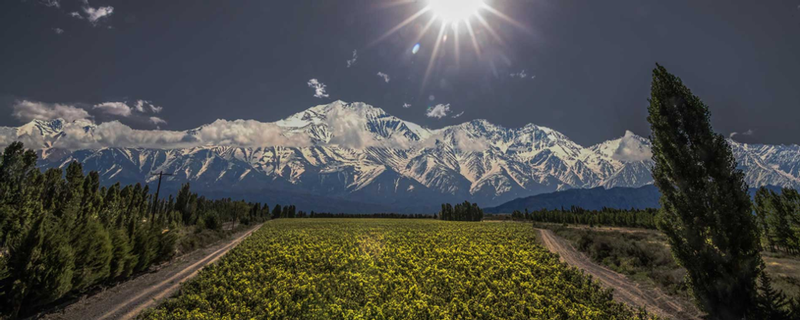
Argentina
The highest elevation commercial vineyard in Washington state (that I know of) sits at 2,900 feet, or about 2,000 feet higher than my Walla Walla apartment. That seems really high! The highest elevation vineyards of the world, however, rise to more than 10,000 feet.1 They perch on the sides of mountain ranges from the Alps to Himalayas, battered by wind and hail, so high that even the sun is a hazard.
Every wine region has its own definition of “high elevation”. Here in Walla Walla, any vineyard about 1,200 or 1,300 feet is pretty high, and the AVA stops at 2,000 feet. This is also true throughout Europe, where very few vineyards sit above 1,500 feet.2 In Argentina, where many vineyards have been planted above 3,000 feet, elevation is a symbol of quality, a feather in the cap for winemakers that is often printed on the wine’s label.
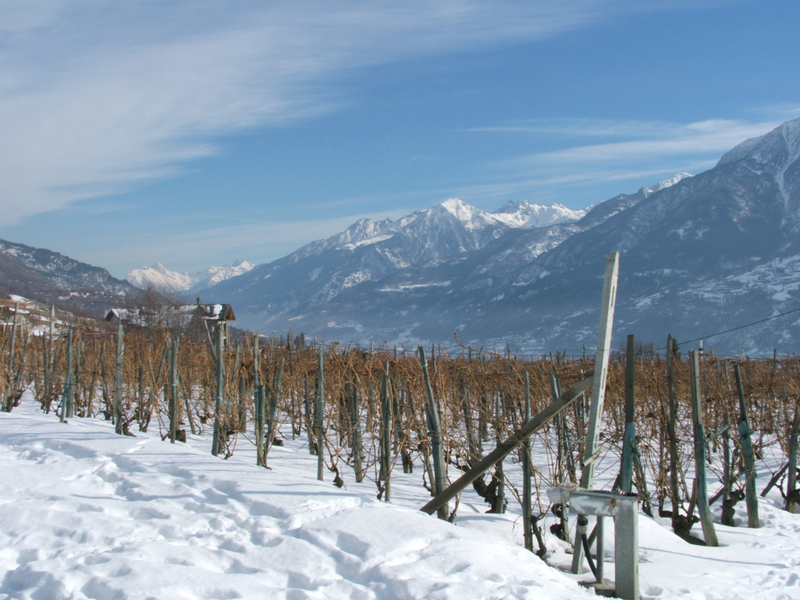
Valle D'Aosta
High elevation vineyards face many challenges. Growing seasons are often truncated, starting later and ending sooner than valley floors. As you climb, temperatures drop, especially at night, making ripening a constant struggle. Catastrophic weather events, especially frost and hail, can eliminate whole crops in a matter of minutes. Some producers in Argentina have even invested in giant, very expensive nets to repel hail.
The benefits, though, are well worth the struggle. Colder nights may slow ripening, but they also maintain acidity in the grapes, a valuable attribute in an otherwise warm region like Mendoza. Mountain soils tend to be very (sometimes excessively) well-drained, driving roots deep in their search for water and nutrients. Then there is the sun: for every 1,000ft increase in elevation, there is a 10% increase in ultraviolet intensity. This extra UV causes the grapes to grow thick skins with increased polyphenols and tannins, sort of like natural sunscreen. This also leads to more intense wines.
Laura Catena, Managing Director of Bodega Catena, knows a thing or two about high elevation vineyards. Her father pioneered extremely high elevation planting in Argentina with Adrianna Vineyard at 5,000+ feet. Her new project, Domaine Nico, takes inspiration from her father’s pioneering work with Malbec and Cabernet Sauvignon and applies it to Pinot Noir. While Malbec and Cabernet are naturally thick-skinned varieties, Pinot Noir has famously thin skins. The increased UV from Domaine Nico’s 3,500-4,000+ elevation vineyards lends intensity and grip to Pinot’s traditional suave perfume. These tightly wound mountain wines impressed the heck out of us at a recent tasting, so we are currently featuring three different bottlings in the shop. Bring a bottle home, give it a long decant, and try not to get vertigo.
[1] 11,000 feet for the aptly named “Pure Land & Super High Altitude Vineyard” in Tibet.
[2] Vineyards in the Valle d’Aosta and Canary Islands extend as high as 4,000-5,500 feet.
South American 6-Pack
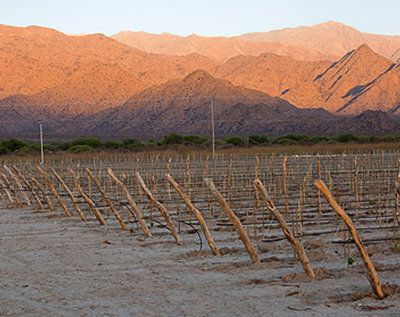
Bodega Amalaya Blanco 2019
- Calchaqui Valley, Salta, Argentina
- 90% Torrontes/ 10% Riesling
- Planted at nearly 6000 feet elevation
- Sandy soils
- Amalaya means “hope for a miracle”
- 91 points James Suckling
- Green apple, grapefruit, honeysuckle
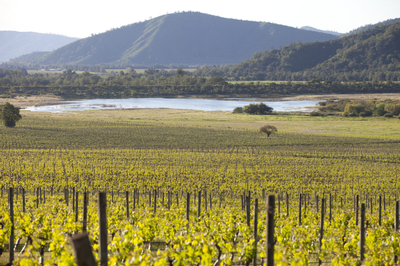
Veramonte Sauvignon Blanc 2018
- Casablanca, Chile
- One of the first vineyards planted in the region
- Organic viticulture
- Less than 15 miles from the Pacific Ocean
- Decomposed granite soils
- Largest contiguous vineyard in Chile
- Pineapple, green banana, candied citrus
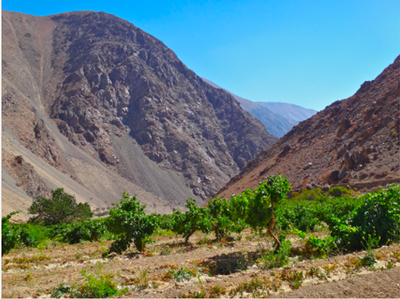
Vina Mayu Pedro Ximenez 2018
- Elqui Valley, Chile
- Name means “river of stars”
- 100% Pedro Gimenez, a different grape than Pedro Ximenez from Jerez
- 65-70 year old ungrafted vines trained alberello style without trellis
- 6,320 feet elevation, the highest vineyard in Chile
- Limestone soils
- Fermented and aged in stainless steel
- No malolactic fermentation
- Aged on the fine lees with battonage
- 90 points Wine Advocate
- Lime, white flowers, powdered rock
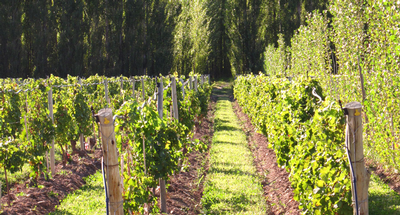
Bodega Chacra Barda Pinot Noir 2018
- Patagonia, Argentina
- 94 points James Suckling, 93 points Wine Advocate, 91 points Wine Enthusiast, 90 points Vinous
- Biodynamic vineyard
- 10-15% stem inclusion
- Aged 11 months in 50% concrete, 50% French oak (15% new)
- Unfiltered
- Blueberry, cherry, earth
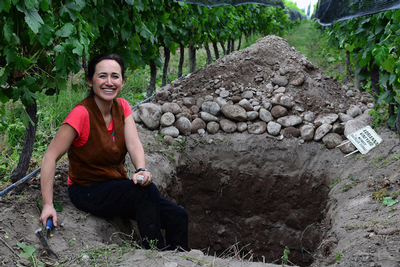
Domaine Nico Grand Mere Pinot Noir 2017
- Uco Valley, Argentina
- Winery named after Laura Catena’s great-grandfather
- Planted 1993 to Dijon clones
- Limestone soil
- 3675-4921 feet elevation
- 20% whole cluster fermentation in small vats
- 7-10 day maceration with punchdowns
- Aged in 2nd fill French oak barrels for 14 months
- 92 points James Suckling, 90 points Wine Advocate
- Raspberry, red cherry, cinnamon
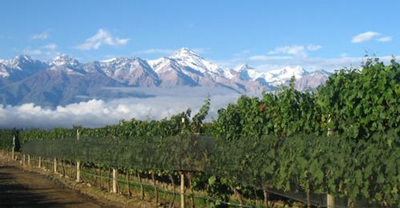
Casir dos Santos Maipe Malbec 2018
- Maipu Valley, Argentina
- From one of the oldest Argentinian wineries, founded in 1862
- Name means “lord of the wind”
- 2017 named Wine Enthusiast Top 100 Best Buy
- Produced from 34 acres of old Malbec vines, some up to 100 years old
- Aged 4 months in oak
- Plum, fig, allspice
Shop the 6-Pack HERE
How/Why to Chill Red Wine, Some Info on Our 3-Pack & A Yummy Recipe to Go With Them
Shop our Chillable Reds 3-Pack HERE
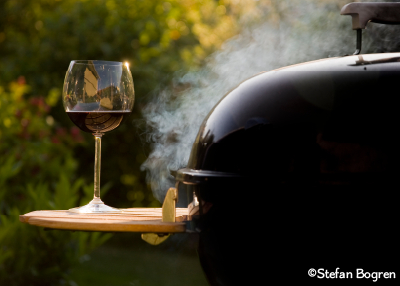
It’s starting to feel like summer. The temperature is going up, the days are getting longer, and the neighborhood streets of Walla Walla all smell like grilling. I love grilling vegetables, but this time of year screams “MEAT” to most folks.
Let’s set the scene. Our recent isolation has given us a lot of time for culinary innovation. “This marinade has 21 different ingredients, 37 steps, and takes 4 days. Perfect.” The day has been hot, into the 90s, so it is still pretty warm when you fire up your grill. You’ve got some steaks, pork chops, whole goose, or bison flanks from your local butcher shop, and you’ve lovingly brined, marinated, dry-rubbed, or sauced them for days on end, until your family members/pets have grown jealous and hungry in equal measures. You flash sear your steaks, or you use indirect heat for your pork, or you cook your bison flanks on a giant Frankenstein grill that you made out of the parts of old broken grills you had sitting in your yard because, COVID DIY. When the time comes, you pull your meat to let it rest (you’re going to let it rest, right? It’s how you show the meat that you’re not an animal, right before you devour it with your bare hands), and you look around for a beverage. A cold beer would be nice, and a frozen margarita would be just fine, but you want something that is going to slake your thirst AND complement the meal that you’ve been working on for the last week. So instead, you reach into the cooler and pull out a chilled bottle of red wine, the perfect pairing for your meaty grill-stravaganza!
What makes a red wine chillable?
Fruitiness, acidity, low tannins, and low new oak. These are wines of refreshment, wines for drinking (vin de soif) rather than pondering or aging (vin de garde). Pinot Noir, Gamay, Austrian reds like Blaufränkisch and Zweigelt, Loire Valley Cabernet Franc, Côt (the local name for Malbec), Grolleau, or Pineau d’Aunis, Frappato from Sicily, Tibouren from Provence, etc. Any light to medium-bodied red will do in a pinch, and almost anything made using carbonic maceration or other less extractive winemaking techniques is perfect.
How cold should I go?
Shoot for 50-55 degrees. Any colder than that and the wines will become muted and inexpressive. I usually do 30 minutes in the fridge or 10-15 minutes in an ice bath. If you overshoot your mark, don’t sweat it. Wine warms up fastest in your glass!
Which wines should I avoid chilling?
Anything heavy, high in alcohol or tannin, or aged with lots of new oak. Chilling makes tannic wine appear more tannic, even metallic. Cabernet Sauvignon (though there are some examples from Saumur, and even Willamette Valley, that would work), Argentinian Malbec and Nebbiolo are examples of wines that show best at a slightly higher temperature.
I slow-cooked some pork on the grill last weekend, and I served it with a lightly chilled Beaujolais-Villages. It turned out great, so I thought I’d pass along the recipe. Remember to keep calm, stay safe, chill down, and grill on.
Pork Brisket with Miso-Marinated Walla Walla Spring Onions
The meat:
- 1.5-2 lb pork brisket
- 1 tablespoon kosher salt
- 1 teaspoon dry mustard
- 1 teaspoon paprika (smoked, picante, whatever)
- ¼ teaspoon cayenne
- ¼ teaspoon ground black pepper
- 2 teaspoon brown sugar
Combine salt and spices. Rub down pork, refrigerate for at least 3 but up to 24 hours.
The onions:
- 6 Walla Walla Sweet Spring Onions
- ¼ cup miso paste (white, red, whatever you’ve got)
- ¼ cup mirin (may substitute ¼ cup white wine with 1 tablespoon of sugar added)
- 2 tablespoons rice vinegar (may substitute apple cider or white wine vinegar)
- 1 tablespoon grated ginger
- 1-2 tablespoon grated garlic
- Couple drops sesame oil
Combine marinade ingredients, whisking until smooth. If the marinade seems thick, thin it out with some water and more mirin/wine. Remove the stems from your onions (these can be used in soups, salads, or as garnish) and quarter lengthwise, maintaining the basal plate by the roots so that the quarters will stay together on the grill. Combine your onions and marinade in a plastic bag or dish. Marinate for at least 3 but as many as 24 hours, occasionally recoating the onions with the marinade.
On the day:
Heat your grill or oven to 250-300 degrees using whatever mastery of fire you prefer (propane, indirect charcoal, electricity, frankenstein bison hibachi, etc). Wrap your brisket tightly in aluminum foil so that no juices can escape (you need the juices later!!!). Grill or roast your brisket at 250-300 for between 2 and 3 hours, until an internal temperature of 200-205. Remove your brisket from the grill, cut a hole in the aluminum foil, and drain out the precious juices. Mix the juices with an equal measure of store-bought sauce, whatever you prefer. This will become the mop sauce for your pork.
While your brisket is resting, grill your onions. Mine took about 10 minutes, but every grill is different. I recommend a bit of color.
When your onions have finished, crank the heat and remove your pork from its aluminum foil. When the grill is up in the 400-500 range, throw the pork back on the grill, along with a thorough basting with your mop sauce. Give it about 5 minutes on this side, saucing occasionally, before very carefully (because it is going to be very tender at this point) flipping it over and basting the heck out of the other side. When it has picked up some color and looks saucy and delicious, pull it off the grill. It is time to eat. Pop a bottle of chilled red wine, grab a hunk of tender pork brisket and some grilled miso onions, and dig in. Also, maybe a salad?
Chillable Reds 3-Pack
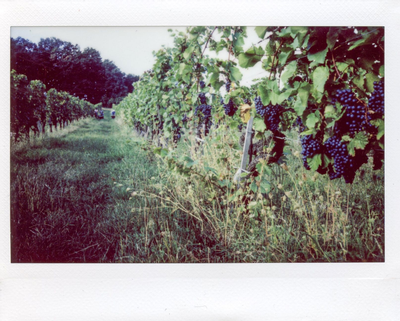
Weninger Blaufränkisch Kirchholz 2015
- Burgenland, Austria on the Hungarian border
- Vines up to 60-years old
- Gravelly clay loam
- Biodynamic viticulture
- 10-day fermentation in concrete
- Aged 20 months in 500l barrels
- Very low sulfur, 0 parts free

Domaine des Chers Saint Amour 2018
- Cru Beaujolais
- 91 points Wine Enthusiast
- 4,000 vines per acre
- Gobelet vines
- Decomposed granite soil
- Handpicked
- 8-9 day carbonic maceration
- 6-month maturation in cement tanks

J.H. Meyer Pinot Noir No Sulfur 2017
- Elgin Valley, South Africa
- Johan Meyer, aka “Stompie”, recently named a “Top 10 South African Winemaker to Watch”
- A blend of three vineyards, Palmiet, Elands Rivier and Klein Rivier
- Organic viticulture
- 100% whole cluster ferment
- Zero winemaking additives, including SO2
Get all 3 for just $69 HERE
Loess is More: The Vineyards of F.X. Pichler
Loess Is More: The Vineyards of F.X. Pichler
Epic F.X. Pichler Duo on sale HERE.
F.X. Pichler is one of the greatest producers of Austrian wine. They have extensive holdings in some of the Wachau’s most prestigious vineyards, vineyards that have been planted for more than 800 years in some cases. These steep, terraced hillside vineyards absorb a ton of sunlight, allowing Pichler to pick Gruner Veltliner, Riesling, and Sauvignon Blanc at maximum ripeness. Wines from the Wachau have a three-tiered system that organizes wines based on finished alcohol levels:
Steinfeder: Named after the wispy grass that grows in the vineyards. These are the lightest wines, topping out at 11.5%
Federspiel: Means “falconry”, these are the mid-weight wines, between 11.5% and 12.5%.
Smaragd: Named after sunbathing lizards, these are the most powerful Wachau wines. Must be over 12.5% alcohol, though many reach into the 14% range.
Lucas Pichler vinifies 70% of his crop as Smaragd every year, harvesting his vineyards in multiple passes. Smaragd wines are phenolically dense and weighty, the vinous opposite of the weightless, crown-capped liter bottles of Gruner that we know and love. The Pichler domaine maintains purity in these monumental wines with a dangerous balancing act. They harvest late, but their brilliant manual vineyard work carefully controls the influence of botrytis, capturing a dusting of ginger and pollen without collapsing into heaviness or rot. This viticultural balancing act is akin to walking a tightrope with an unruly toddler on your back. In the cellar, Lucas allows fermentation to progress until the wines are (functionally) dry, but arrests it before they begin malolactic fermentation, further preserving freshness and vivacity.
These Man on Wire wines are made possible by the incredible vineyards of the Wachau. Here are three of F.X. Pichler’s best.
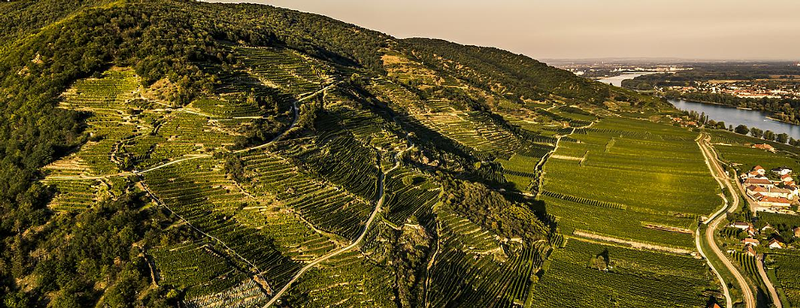
Loibenberg
Loibenberg is large, at 76 acres, and warm, though its assorted aspects and pitches make it more climatically varied than many single vineyards. The first mention of Loibenberg dates back to 1371, and it has been cultivated ever since. This vertiginous slope averages a 40% incline, though some pitches can be as steep as 80%. These terraces require 300 man-hours bruising, fatiguing labor per acre. The soil consists of a thin layer of glacial loess over decomposed gneiss. Yes, the same loess that makes up most of the soils in the Walla Walla Valley. The vineyards of the Wachau are defined by their proportion of loess to gneiss. The thicker, more generous loess soils are ideal for Gruner Veltliner, whereas the rockier soils where the gneiss substrate is closer to the surface favors Riesling. This rocky, sandy ground provides excellent drainage, whisking away water so the vines can continue to hang their crop late into the season without risking rot. F.X. Pichler sources most of the grapes for their “M” (for “monumental”) cuvee from this historic vineyard.
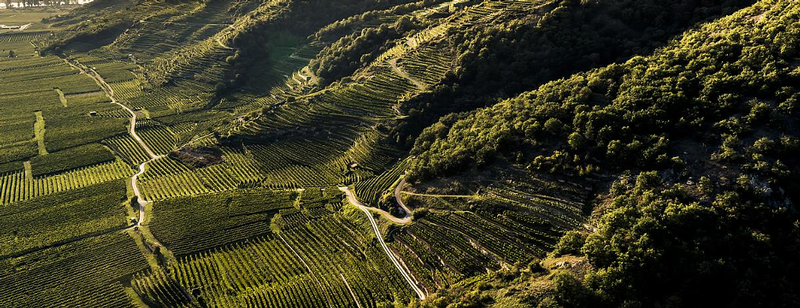
Steinertal
Steinertal means “stony trench”, an appropriate name for this curving, amphitheatre-like vineyard on the eastern end of the Wachau. It is one of the coolest vineyards in the Wachau, as well as one of the rockiest. Here again you will find thin sandy loess over gneiss, though the gneiss is especially decomposed in Steinertal, allowing the roots of 70 year old Gruner Veltliner to burrow deeply into the bedrock. Pichler’s Steinertal Gruner has all of the Smaragd power that characterizes their bottlings, but the cooler climate finesse of the site shines through in its graceful midpalate and refreshing finish.
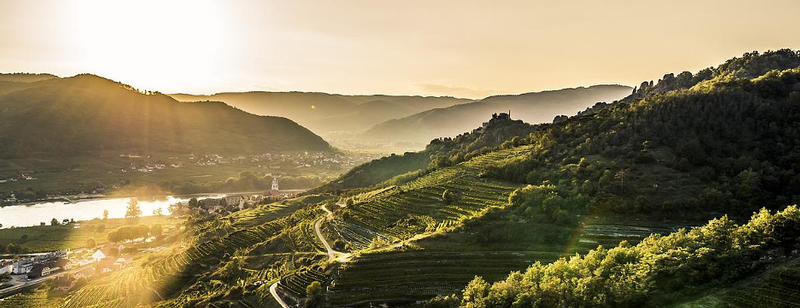
Kellerberg
Kellerberg, or “cellar mountain”, falls somewhere between Loibenberg and Steinertal in warmth. It faces the south and southeast, and its finest aspects look directly out over the Danube. The south eastern exposure has limited erosion from wind, preserving more loess in the soils. The lower slopes have more humus and loam, and as you climb you find more stones. F.X. Pichler sources their Kellerberg Riesling from a parcel high up on the hill, where the soils are thin and less vigorous. The struggling vines produce fruit with great intensity and savor, and the wines are exceptionally long lived. Expect your Pichler Rieslings to keep for at least 20 years.
The Wachau has some of the finest white wine vineyards in the world, and F.X. Pichler has many of the finest parcels within the Wachau. So, take a cue from the wines of the Wachau and sunbathe like a lizard while you savor an F.X. Pichler Gruner Veltliner or Riesling.

Shop HERE for Epic F.X. Pichler Duo
ADD 'M' Monumental Smaragd Gruner Veltliner 2016
Northern Rhône
Roasted Slopes, Burnt Earth, and BBQ
Shop the Battle Rhône: North vs. South 4-Pack -- bottles detailed below
Syrah has rapidly established itself as a signature varietal in Walla Walla, recently supplanting Merlot as the second most planted variety in the AVA. The best Walla Walla Syrahs exhibit a feral, savory edge that reminds me of wines from Syrah’s birthplace in the Northern Rhone valley. While many people are familiar with Rhône blends, the classic Grenache-Syrah-Mourvédre-etc. combination is styled after traditional Southern Rhône blends from Mediterranean appellations like Gigondas or Châteauneuf-du-Pape. The Southern Rhône produces 95% of all Rhône wine, so finding good examples of northern Rhône wines can be challenging. Luckily, the shop is always stocked to the gills with archetypal examples of Côte Rôtie, Hermitage, and Cornas, as well as everyday drinkers from Crozes-Hermitage, Saint Joseph, and the broad Collines Rhodaniennes designation.
Northern Rhône Syrah is my desert island, death row final meal, death bed wine. I’ve been reading the 700 page “The Wines of the Northern Rhône” by John Livingstone-Learmouth for fun. So, indulge me if you will, while I rant about French fruit into the consensual hallucination we call the interwebs.
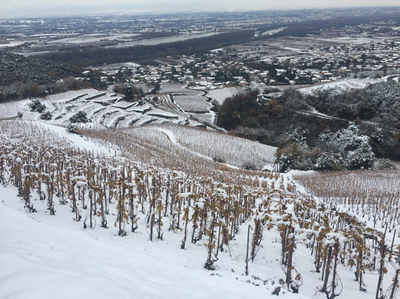
Jean Luc Colombo, Cornas
Weather
As I mentioned above, when we picture the Rhône, we generally think of the south of France. Warm Mediterranean winds, maybe an olive tree or two, scrubby garrigue wafting scents of thyme and rosemary as vigneron pick bunches of Grenache off of gobelet-trained bush vines: the kind of place a medieval Pope would go on vacation.
The Northern Rhône is a different animal (probably a furry one). It is continental, with cold winters and warm, but not hot, summers. “But wait,” the few francophones among you say, “doesn’t Côte Rôtie translate to “roasted slopes”?” “Yeah,” the even fewer celtophones among you say, thrilled that their college minor is finally paying off (take that, Dad!), “Cornas means “burnt earth” in old Celtic!” That’s true, but it’s an example of the difference between a warm climate vs a warm spot in an otherwise cool climate. Failla winemaker Ehren Jordan worked several years for Jean-Luc Columbo in Cornas, and he recalled arriving on a warm (by no means hot) 80-degree summer day to find the locals complaining about a heatwave. Côte Rôtie is closer to the Beaujolais than Avignon, and it represents the northernmost plantings of Syrah in France.
The relatively cool weather draws out a unique expression of Syrah. The delicate violet and spicy aromas that typify cool-climate Syrah burn off in high heat,1 giving way to black plum, chocolate, and coffee. You see this difference within the Northern Rhône itself. Côte Rôtie in the north is generally the lightest and most ethereal of the appellations, more red-fruited driven than the warmer vineyards of Hermitage and Cornas, which produce a rich, more robust wine with darker fruit.
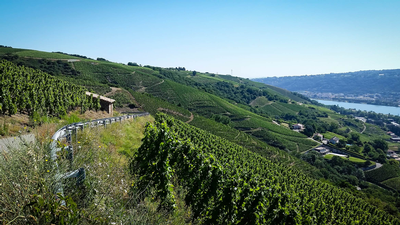
La Grande Colline, Cornas
Vineyards
Syrah is the only red grape allowed in wines of the Northern Rhône, though Viognier is allowed for co-fermenting in Côte Rôtie, and Marsanne and Roussanne serve the same role in Hermitage. The best vineyards are on very steep south-facing hills that allow greater heat accumulation and ripeness. The vines are traditionally trained up a stake in a style called “echalas”, much like the Mosel or Mt. Etna. These stakes allow the Syrah shoots maximum sun exposure, while allowing vineyard workers useful climbing aids while they work in the vineyards. Planting is high density, from 3-4k plants per acre, and the work required is enormous. Mechanization of the steepest, grandest slopes is impossible, and one vigneron estimated that it took 400 man-hours per acre to care for the vines. Some of the wealthiest landowners hire helicopters to spray sulphur and other vineyard treatments. Yields are low (often less than 2 tons per acre), and given the backbreaking work required, it is no mystery why many vineyards were abandoned in the lean years between phylloxera and the gradually increasing prices of the 1980s and 90s.
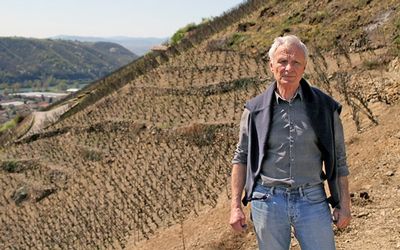
Rene Rostaing, Côte Rôtie
Winemaking - To Stem or Not To Stem
“One aspect here, admittedly less severe than at St. Joseph, is that of young growers coming on stream and turning out technobabble wines. The previous generation was involved with what to plant, following decrees, mastering white wine vinification, tidying up their cellar work. This current generation is feeding off a high price regime and lending their ears to advisers and image dabblers, the theory merchants who dispense advice without responsibility. Suddenly a father-to-son Domaine switches from the serenade to punk rock: a world of injected oxygen, lees stirring, high-temperature fermentation, max extract, and wines that fall apart after just 20 minutes of air.” John Livingstone-Learmouth, on Crozes-Hermitage.
As with Barolo, the Northern Rhône has had a stylistic divide between traditionalists and modernists. Traditional vinifications were done whole cluster, with the fruit crushed by foot and fermented in concrete tanks, before aging in concrete, foudre, or old 600l demi-muid barrels. Modern techniques rely on destemming, extended macerations, new 225l oak barrels, and a range of enological products. More recently, a middle way has formed, utilizing both modern and traditional approaches. The traditional wines have gained purity from softer tannins and more rigorous barrel selection, and the modern wines show less new oak and dry extract.
The choice of whether to destem or not remains crucial. Classic producers like Clape in Cornas or Jamet in Côte Rôtie continue to utilize 100% (or nearly) whole cluster, while Lionel Faury in Saint Joseph is less prescriptive, incorporating various levels of whole cluster depending on the cuvee and vintage. Even Guigal, as modern a producer as they come, uses large amounts of whole cluster in ripe vintages. Whole cluster fermentation brings sappy, floral spice to a wine, emphasizing the lighter and more delicate elements of cool-climate Syrah. Some vintners like Thierry Allemand, Jean Michel Stephan, and Herve Souhaut utilize carbonic maceration, leaving their whole bunches uncrushed. This produces a silky mouthfeel and explosive fruitiness that, when combined with Syrah’s more animalistic side, creates a very complete expression of the grape.
The Wines
I recently described wines from the Rocks District as “a bear in a blanket, waiting for Goldilocks”. Syrahs from the Northern Rhône, their stylistic parents, are a bear in a meadow. Sure, they could tear your face off, but they’d rather eat blackberries and play with wildflowers. They can be feral and smoky, like wild boar bacon with freshly cracked black pepper and mixed olive tapenade. All of this ursine ferocity is wedded to pure violet and bramble, with huckleberry and blackberry running down your chin. The monumental structure of bristly whole cluster traditionalists holds up well to cellaring, as do densely extracted modernist wines, with good examples showing well after 10-15 years. Young wines, especially from more affordable appellations like Saint Joseph and Crozes-Hermitage, drink very well in the meantime, with snappy red or blue fruit amidst tufts of savor. I love these wines with anything from the grill. Lamb and beef are classic pairings, especially for the darker wines of Cornas or Hermitage. The lighter wines pair well with hearty pork, dark meat chicken, or game birds. Who could say no to some medium-rare grilled duck breasts and a glass of Côte Rôtie?
[1] Rotundone accumulation, the black pepper aroma, is directly related to temperature in the fruit zone.
Battle Rhône: North vs. South 4-Pack
North:
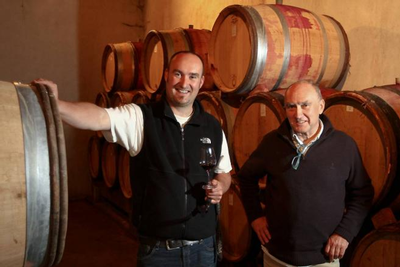

Maxime and Alain Graillot, Domaine Equis
Equis Equinoxe Crozes Hermitage
- 100% Syrah
- Practicing organic
- commune of Beaumont Monteux
- Native yeast ferment in concrete tank and large wooden tronconique vats
- 80% destemmed
- Aged in used DRC barrels for 9 months
- 3,300 cases
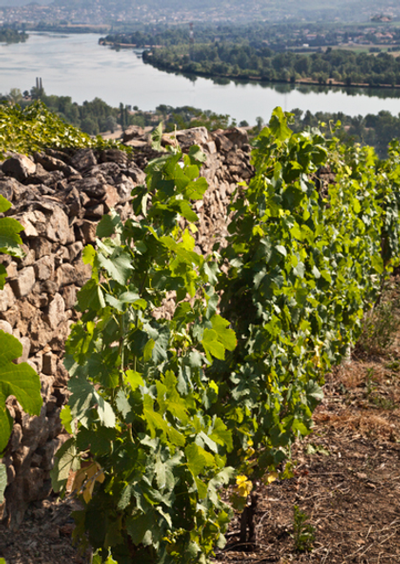
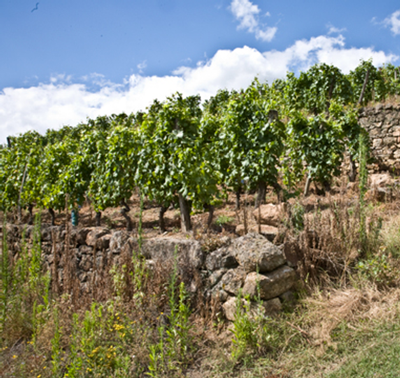

Domaine Faury
Faury Collines Rhodaniennes Syrah
- Granite soil
- Partially destemmed
- 10 day maceration
- Aged 6 months in 600l demi-muids
South:
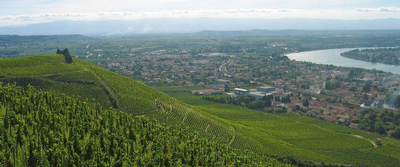

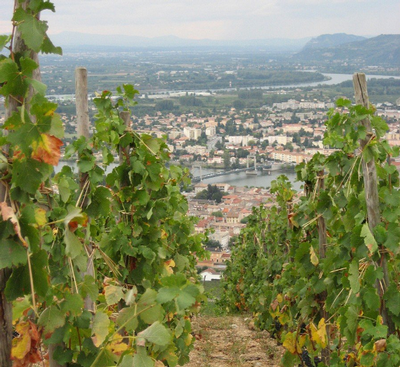
Delas Freres Vineyard in Hermitage
Delas Cotes du Rhône St. Esprit 2017
- 60% Syrah/40% Grenache, grown in the Ardeche
- 88 Points WS
- 41k cases
- All destemmed, 15-day maceration, aged in stainless for 8 months
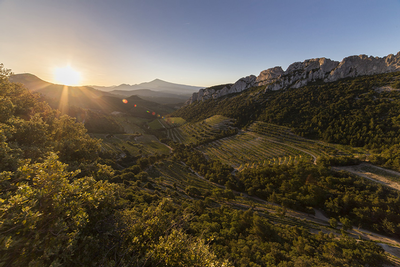

Gigondas
Domaine du Cayron Gigondas
- Low yields 30hl/ha (less than 2 tons per acre)
- 40-70-year-old vines
- 78% Grenache, 14% Syrah, 6% Cinsault, 2% Mourvèdre
- 21-day maceration
- Aged in foudre for 12 months
- Unfined, unfiltered
Tiny Bubbles...The World of Sparkling Wine

A well-riddled bottle in the cellars of Gaston Chiquet, from Skurnik
One of the hardest things about working in the wine industry is that you wind up with a taste for Champagne, even if you’re on more of a “Champagne of beers” budget. The economics of Champagne1 means that it can be difficult to drink it as often as we’d like. Despair not, though, because delicious sparkling wines2 are made the world over. Saber open a bottle of local pet-nat with your trusty cavalry sword, pour yourself a bubble bath, and dive in. It’s time to talk fizz!
Traditional - France
For many folks, sparkling wine is Champagne, so let’s start there. Champagne lies very far north in France, just to the east of Paris near the city of Reims. It has a very cool, rainy climate, so even though the Champenoise grow grapes that ripen early (Chardonnay, Pinot Noir, Pinot Meunier3), in many vintages they struggle to achieve sufficient ripeness to produce still wines. These grapes, because of their high acidity and low potential alcohols, are perfect for sparkling wine.
The process for making Champagne is known as the traditional method (methode traditionnelle). First, the grapes are picked and pressed, just like regular white wine. The juice is then fermented, usually in stainless steel tanks or oak barrels depending on the winemaker’s4 preference. The highly acidic still wines that are produced are called the vin clairs.5 These are blended with reserve wine from previous vintages (unless the producer wants to make a single vintage wine) before being bottled with a small amount of yeast and sugar. As the yeast ferments the sugar, it produces carbon dioxide. This trapped CO2 from the second fermentation stays in the bottles…And Blammo! - we’ve got bubbles.
As the yeasts die, they drop out of the wine and form sediment in the bottle known as lees. The amount of time a sparkling wine spends on the lees has a huge impact on its aroma and flavor, contributing notes of baking bread or roasted nuts which round out and soften the wine. A non-vintage Champagne must spend at least 15 months on its lees.
After the lees are removed through a process known as disgorgement6, the wine is dry and still very tart, so a small amount of sugar is added to balance the wine. This is the dosage, and it determines the finished sweetness of the Champagne. Brut is the most common level (~12g sugar), but drier styles have become more popular recently, with some producers choosing to forgo this step altogether in favor of Brut Nature or zero dosage wines.
Sparkling wines from other regions of France that are made in the traditional method are known as Cremant. These are some of the best deals in sparkling wine, checking most of the stylistic boxes of Champagne without the steep price tag. Alsace has a particularly rich history of sparkling wine production,7 and their Cremants are simply delicious. Check out the Cremants d’Alsace from our shop favorites Kuentz-Bas or Pierre Sparr.
Traditional - Spain, Italy, England8
There are many classic examples of traditional method sparkling wine made across the world. In Spain, the Catalonian varieties Xarel-lo, Macabeau, and Parellada are used to make rich, zesty Cava, many of which can be found for less than $20. We’re currently featuring the CVNE Brut for $13 and the Mas Fi Brut for $12. Spain is often the place to go for wine bargains, but their sparklers take this to another level.
Italy and England produce some of the classiest bubbles outside of Champagne. The sparkling wine producers of England are blessed with the same chalky limestone soils and cool climate as Champagne,9 producing wines of similar pedigree. Try a bottle of Digby Fine English Leander Pink Brut NV the next time you’re in the mood for some fancy pink bubbles. For an Italian take, the DOCG of Franciacorta in Lombardy is home to Chardonnay, Pinot Noir, and Pinot Blanc that sees a traditional secondary fermentation in bottle and extensive lees aging. Sound familiar?
Non-Traditional - Italy
From “is it actually sparkling wine or did I just shake it?”, Frizzante to vigorously frothy Spumante, Italy has got it all. Prosecco, the most famous Italian fizz, is made using the Charmat Method, which is kind of like traditional method on a larger scale. Here, the secondary fermentation takes place in a pressurized tank rather than in each bottle, streamlining the process and allowing Prosecco producers to charge less for their delicious wine. Look for Prosecco Superiore DOCG and leave the orange juice in the fridge.
While I love Prosecco before dinner as an aperitif, Lambrusco really shines on the table. This frizzante from Emilia Romagna or Lombardy can range from bone dry to slightly sweet10 and from dark pink to almost black. We love Lambrusco for its pitted cherry and wild strawberry aromas balanced by savory spice and lovely acidity. Pair the shop favorite Cleto Chiarli Vecchia Modena Premium Lambrusco di Sorbara 2018 with a large cheese and charcuterie plate and you might just forget to serve the main course. Don’t forget to pour a pearly glass of Moscato d’Asti from a conscientious producer like De Forville for dessert.
[1] Difficult farming in a marginal climate, a labor-intensive vinification process, expensive packaging, and long cellaring requirements before release (3 years for vintage champagne, though many houses go much longer).
[2] Just don’t call them Champagne if they’re not from Champagne. The Champenoise have been fighting that particular fight since at least 1891.
[3] There are select growers like Laherte Freres with plots of Pinot Blanc, Pinot Gris, Arbane, and Petit Meslier, but Champagne is most often the big three mentioned above.
[4] Known in Champagne as the “chef de cave”, which is kind of how I’ve felt during social distancing.
[5] The tasting/blending of which is supposed to be a palate-crushing experience
[6] Which can be very, very messy if you don’t know what you’re doing.
[7] They produce more than half of all Cremants.
[8] South Africa also makes delicious traditional method wines under the name “cap classique”
[9] There’s a famous channel between them, but Champagne is darn close to Sussex
[10] Many people think that Lambrusco is always sweet, but that is mostly down to a few industrial producers making crappy wines
About the wines in this offer…
La Vielle Ferme Reserve Brut
The Perrin family of Chateau Beaucastel harvest Chardonnay and Ugni Blanc from limestone soils that preserve natural acidity, then perform regular batonnage to add savory richness. Apples, oranges, and lemons abound, like a still life painting in a glass. This dry, toasty French bubbly is best when deciding which of your family members you trust to cut your hair (answer: you love them all, but absolutely none of them).
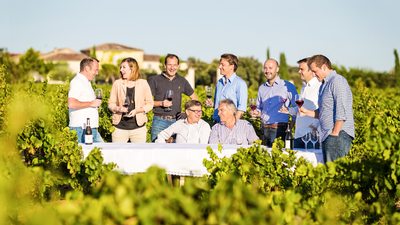
Perrin family
Acinum Prosecco
These Glera vines are trained in a Veronese pergola, which is pretty much a lawn chair for vines. The winemakers took their time, harvesting the grapes by hand, gently pressing, and slowly fermenting the wine with native yeasts. Take a leisurely tip from the pergola and enjoy the soft, inviting nose of honeysuckle and candied citrus palate in a backyard kiddie-pool folding chair.
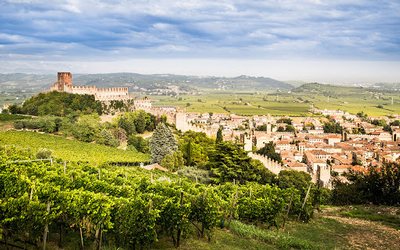
Acinum’s vines in the Prosecco area of Treviso
Domaine Xavier & Agnès Amirault Les Quarterons Cremant de Loire Brut
Chenin Blanc’s natural acidity makes it perfect for sparkling wines. The fruit for this traditional method sparkler comes from Anjou, and it ages at least 18 months on fine lees, gaining weight and complexity. White grapefruit and a streak of chalky minerality make this refreshing Cremant the ideal accompaniment for breakfast (or brunch, or breakfast for dinner) in bed.
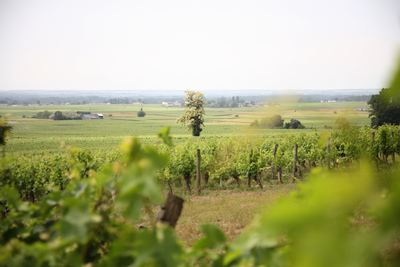
Les Clos de Quarterons
Juve Y Camps Reserva de la Familia Gran Reserva Brut Nature 2016
This blend of 40% Xarel-lo, 30% Macabeo, 20% Parellada, and 10% Chardonnay spends 36 months aging sur lie. Aromas of stone fruit and baked bread combine like a peach cobbler, though the ripping Brut Nature finish is long and totally dry. Drink this vintage cava while watching YouTube videos about sourdough starters.
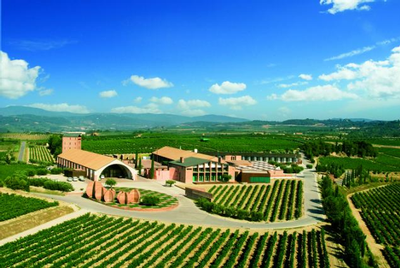
Juve Y Camps
Click to Shop!
Etna...Taste the Volcano

Map of Mt. Etna
Taste the Volcano
The next time you hear a local vineyard manager complaining about mildew pressure, drought, or frost, remind them that the vineyards of Mount Etna in Sicily face those same challenges, as well as the constant threat of burning ash and MOLTEN LAVA! Some years, the mountain is quiet. Other years, as in 1981, houses and vineyards are destroyed. Most terroir, from the Jurassic limestones of the, uh, Jura, to the fractured basalt of Eastern Washington, has been in place for millions of years. Etna, on the other hand, is continually remaking itself, adding layers of ash and rock with each new eruption. After each discharge, vignerons scramble to plant on the new surface. These are vineyards forged from fire and ash.
The vines of Mt. Doom, I mean Etna, cling to the side of the active volcano at elevations as high as 4,300 feet, making them some of the highest commercial vineyards in the world.1 Traditional vineyards are planted “albarello” style (little tree), meaning each vine is trained up a post.2 These old vineyards are often densely planted polycultures with olive trees, fruit trees, and other crops scattered among vines that can be as much as 240 years old. Phylloxera seems to avoid black volcanic soil,3 and the oldest vineyards remain ungrafted. Etna has produced wine since Roman times, but most of its vineyards sat abandoned until its resurgence of the last 30 years. The Benanti family founded their winery in 1988, marking the first modern investment in the region.
Etna is home to many indigenous varieties, but there are really only a couple that you need to remember. The reds are made from Nerello Mascalese (sometimes with a little Nerello Cappuccio or Alicante Bouschet thrown in for color), while the whites are typically Carricante based. Nerello Mascalese is a late ripener, often hanging well into November. Its wines are perfumed and earthy with a waft of volcanic ash, recalling blood oranges, and lapsang souchong tea. They are often compared to Nebbiolo or Pinot Noir, wines that show sous bois (undergrowth or forest floor) aromas. If good red Burgundy smells like walking through a damp forest, then Etna Rosso smells like walking through that forest a year after a fire.
Carricante, like its translucent red counterpart, couldn’t hide its volcanic origins if it tried. This neutral, savory white often grows on the eastern side of Etna in vineyards where Nerello Mascalese would struggle to ripen. The Etna Bianco DOC requires that a wine be at least 60% Carricante, and Superiore wines must be 80%. It’s a high acid grape, presenting citrus fruits of lemon or orange, but we’re here for the rocks. The best examples scream volcano with pyroclastic minerality4 like a sprinkling of smoked sea salt, which stretches the finish and leaves you looking forward to your next sip. Carricante means “loaded”, and it must be short pruned to tame its tendency to overbear. With careful viticulture, Carricante can produce profound wines that rival Italian classics like Soave, Fiano, and Verdicchio in ageability and intensity, cellaring for 10 years or more. What do the next 10 years hold for these vineyards? Only Mt. Etna knows.
[1] Check out the Valle d'Aosta for an alpine take on high elevation Italian wines.
[2] Much like echalas training in the Northern Rhone or Mosel.
[3] As in Tenerife and Santorini.
[4] Put your pitchforks away. I vote that we retire minerality except in cases where the rocks are actively trying to kill you.

“Alberello”-trained vines, photo courtesy of Louis Dressner

More “Alberello”-trained vines (and some sort of mammalian tractor), courtesy of Louis Dressner


Vincenzo Bonaccorsi of ValCerasa tending his vines A vineyard shot from Tenuta Masseria Setteporte
Peeking into Basque Country: Cider, Txakoli and a Meal
Peeking into Basque Country: Cider, Txakoli and a Meal
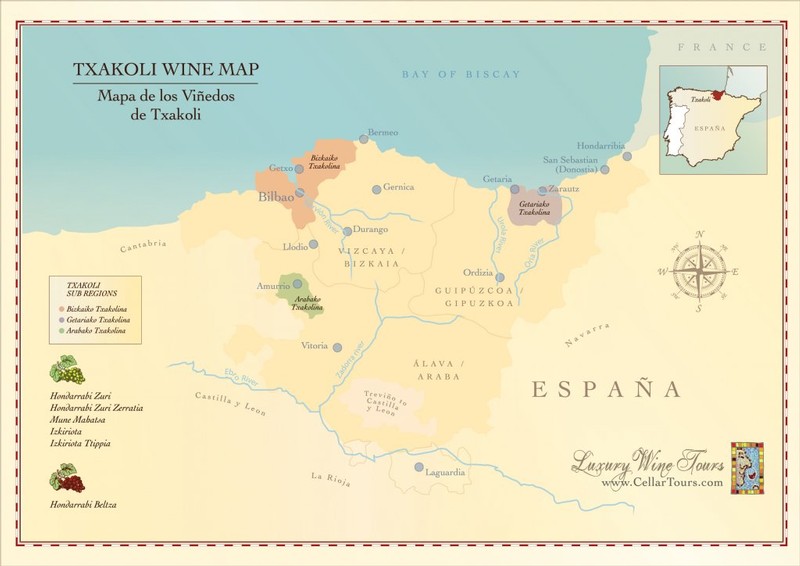
You walk into a building of stone and heavy, old timber, and are greeted by the smell of grilled beef fat, sheep’s milk, and apples. These are not perfect grocery store Honeycrisps. These apples are tart, bitter, and hard. These are apples with a past. You find an open spot at a table, probably standing, and as you settle in, you notice your neighbors. Everyone seems to be eating, drinking, and speaking all at once, and the low, hard ceilings bathe you in a language that has no western analogues. Your ears quickly decide that there are far too many x’s and z’s.
A server delivers a plate of chorizo and an empty glass. Someone shouts, “Txotx!” (which sounds to you like “Choach!”), and a queue of empty cider glasses with people attached to them forms in front of a giant barrel that you somehow missed when you came in. You join the line, and when you reach the front, a kind stranger taps the barrel, spraying a thin stream of cloudy, frothing cider into your glass. As you return to your table, you sniff. A little sour, a little funk, maybe a touch of cider vinegar. An omelet flecked with pungent salt cod has joined your chorizo. You fork yourself a bite of omelet and wash it down with a swallow of cider. The richness of the egg and the saltiness of the cod shake hands with the tannic brightness of the cider, becoming business partners in your mouth. Your server delivers a steaming heap of rare, bone-in beef to your neighbors, and tells you to finish your omelet, your steak is on its way. The call of “Txotx!” comes again, and you realize that your glass has mysteriously emptied itself. The meal has just begun.
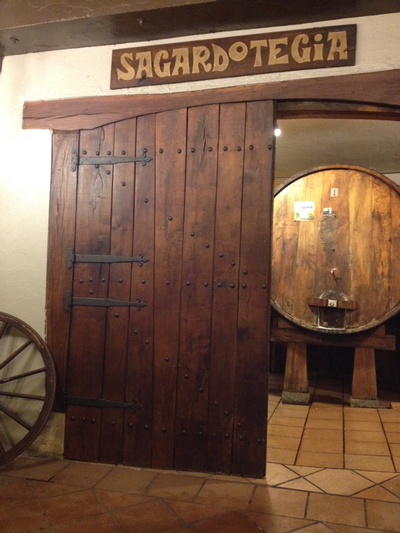
Photo courtesy of Chandler Briggs
Basque cider houses, or sagardotegi, have become an improbable tourist attraction in northeastern Spanish towns like Astigarraga and Hernani. Basque Country has a long history of cider production. Its fisherman and whalers were renowned in the 16th and 17th century, ranging far afield in ships fitted with internal cider casks. The crew members would drink up to three liters per day, staving off scurvy with the tart cider.
Basque cider, unlike other European ciders from England or Normandy, is generally still, though some show a light effervescence like Txakoli. They are dry, with little to no residual sugar, and can be quite tannic, like red wine or heavily steeped tea. They are the wild ales of the cider realm, unapologetically unfiltered and funky. The traditional Basque high pour (again, also used on Txakoli) acts like a splash decant for wine, blowing off some of the funk to reveal the fruit within. Basque ciders are delicious by themselves as an aperitif, but they really shine on the dinner table. Everyone has plenty of time to cook these days, so let’s make a Basque cider house dinner!
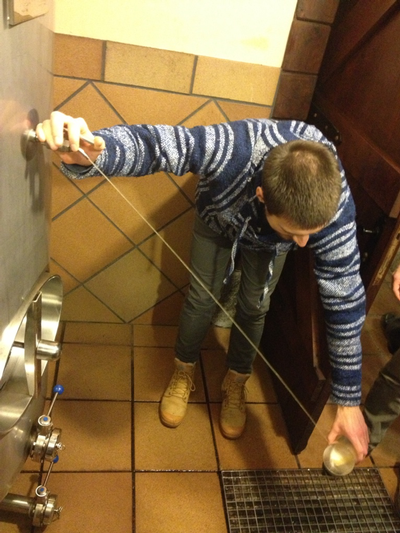
Photo Courtesy of Chandler Briggs
The traditional, protein-heavy sagardotegi menu begins with a plate of hard, spicy chorizo, followed by the salt cod omelet. Salt cod, or bacalao, is common throughout Portugal and Spain, and can be purchased online. It is a great pantry item, as the salt cure keeps it fresh for years. Remember to soak your salt cod for a day before preparing it, rinsing it several times in fresh water.
The second course is roasted white fish with grilled peppers. I prefer halibut, but you could also use (fresh, uncured) cod. Any small, green pepper will do, though I like shishito peppers for their sweet flavor and thin, quickly grilled skin.
The fourth and main course is the Txuleta steak, a bone-in rib steak grilled over coals. The steaks are sourced from cattle that are much older than the beef that Americans eat, usually 8-18 years old (most American cattle are slaughtered before 30 months). You can stick with a rib-eye for authenticity or branch out with an alternative cut. Erick Turner, owner of Butcher Butcher Walla Walla, recommends sirloin cap or hanger.
The final course is a cheese plate. Most Basque cheeses are made from sheep’s milk, reflecting their strong shepherding culture. The clean brightness of aged sheep cheeses like Abbaye de Belloc, Idiazabal, or Petit Basque helps to tame the wildness of the ciders. Manchego, Pecorino, or local Monteillet Fromagerie make fine, locally available substitutes. Traditional accompaniments include walnuts and quince paste, though sliced apple or pear will serve.
This menu is a little meat-heavy, so feel free to serve some veggie pinxtos (Basque tapas) to round out the meal. Asparagus is in season here in Walla Walla and in Basque country, so grill up some spears next to your peppers and steak. Spring onions will be coming on strong too. Serve them halved or quartered and grilled, ideally with a swipe of Catalan romesco (jarred peppers, tomato paste, nuts, stale bread, and vinegar makes this the ultimate quarantine friendly pantry sauce). Finally, no tapas menu would be complete without fried patatas bravas and lemony, garlicky aioli. Double fry the potatoes and use an immersion blender to take the broken-emulsion fuss out of the aioli. Txotx!
“We ate at long trestle-tables out of permanently greasy tin pannikins, and drank out of a dreadful thing called a porron. A porron is a sort of glass bottle with a pointed spout from which a thin jet of wine spurts out whenever you tip it up; you can thus drink from a distance, without touching it with your lips, and it can be passed from hand to hand. I went on strike and demanded a drinking-cup as soon as I saw a porron in use.” George Orwell, genius and apparent fuddy-duddy, in “Homage to Catalonia”
About the Porron
If a porron looks like a cross between a watering can and a decanter, that’s because it is! The porron is a hand-held glass pitcher that pours a thin stream of wine, ideally from a great height. You can drink anything out of a porron, but traditionally they are used for Txakoli, cider, or Cava. The porron is probably descended from conical Roman drinking cones named rhyton, and the Catalonians have perfected its use. To drink from a porron, place the spout close to your mouth and tip the pitcher. Catch the stream in your mouth, then slowly pull the container further away from your body, until it is at arm's length. The further the distance between the porron and your mouth, the more points you get. A porron is a crazy straw for grown-up drinks, and it makes your drinks taste better too. This stylish variation on the Basque high pour aerates your wine or cider, opening up the beverage just like a decanter. Grab your new porron and a bottle of Txakoli - or three - and pour on!

Photo courtesy of De Maison Selections
Let us not forget Txakoli!
Basque country straddles the Pyrenees on the border between France and Spain. Likewise, its most famous wine straddles the border between sparkling and still. Txakoli is a frisky, lightly effervescent wine, similar in style to an Italian frizzante. Originally, the wines were fermented in large wooden foudre, like the aforementioned ciders, though nowadays you are more likely to find stainless steel tanks. Stainless is a valuable tool because it allows the winemaker to control the temperature of the vessel. When fermentation has completed, the tanks are cooled to just above freezing, capturing and preserving the carbon dioxide that the yeasts have produced.
This kiss of CO2, when combined with low alcohol1 and whiplash acidity, make Txakoli one of the most energetically gulpable wines out there. These are the session beers of the wine world, wines that you can drink for hours without feeling weighed down or groggy. Before dinner, entertain yourself by learning the Basque high pour!
During dinner, Txakoli pairs well with darn near everything. These wines are literally zesty, exhibiting a touch of citrus pith that fans of Albariño or Pinot Grigio will be familiar with. This phenolic bitterness allows for pairings with classically difficult vegetable courses like baby peas or spicy salad greens. Follow the vegetables with clams in a parsley sauce, or crispy pork belly, or a fava bean and spring onion stew. Finally, finish your meal in true Basque-style with your cheese plate from earlier. You did remember to make your cheese plate, didn’t you?
[1] Single digit abv’s are not rare
Hospice du Rhône, Rhône Grapes in America & The Rocks District
La Terre Parle (The earth speaks)
Hospice du Rhône, the annual celebration of Rhône grape varieties and producers, was scheduled for April 22-24 before it was cancelled due to the ongoing Covid-19 crisis. Two of the cancelled seminars would have highlighted vineyards in the newly established (2015) Rocks District of Milton-Freewater AVA,1 a geologically distinct sub-AVA within the larger Walla Walla Valley AVA. Let’s celebrate local terroir from the comfort of our homes by learning about Rhône grapes in America and the people that have championed them!
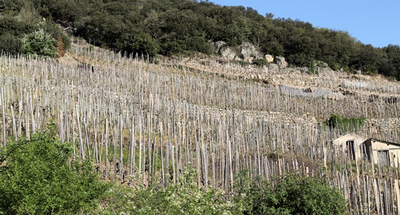
Cornas, Rhône
Hospice du Rhône
It started with a bottle of Viognier and a joke.2 Mat Garretson, one of the founders of Hospice du Rhône, was a red wine drinker until he popped a bottle of Domaine Georges Vernay Condrieu. He was cooking something that called for white wine, and he was about to deglaze the pan when the aroma of honeyed apricot stopped him in his tracks. This bottle of Viognier from the northern Rhône inspired him to create an appreciation society focused on the grape. He met John Alban, one of the Rhône Rangers (more on them later) and an early proponent of Viognier.3 Together, they would expand the society into a non-profit business league and international vintners’ association that meets yearly in Paso Robles. They promote producers around the country that grow and vinify Rhône varieties like Syrah, Grenache, Mourvédre, and Viognier. The Hospice du Rhône tastings and seminars are the place to rub elbows and exchange ideas with American and international Rhône royalty. Their director, Vicki Carroll, was recently named Wine Enthusiast’s Person of the Year.
Rhône Grapes in America4
Rhône varieties have been planted in the US since at least the mid-1800s. Old-vine mixed black plantings in California are usually Zinfandel-based, but they often include smaller amounts of Grenache, Mourvédre (Mataro), Carignan, Syrah, Cinsault, Counoise, and others. These grapes were typically picked together as a field blend, and it wasn’t until the 1970s that producers, inspired by the Rhône heavy imports of Kermit Lynch, began searching for single-varietal Rhône plantings.
Joseph Phelps released the first varietally labeled Syrah in 1977, and although everyone agrees that it was horrendous,5 Phelps remained committed to the variety. Gary Eberle, another Rhône fanatic, planted the first modern Syrah vineyard shortly thereafter, establishing Estrella River with vine material from Chapoutier in Hermitage by way of UC Davis.6 In the decade that followed, young winemakers like Randall Grahm, Steve Edmunds, Adam Tolmach, Bob Lindquist, and (the aforementioned) John Alban would all focus their production on Rhône grapes. By the time Grahm appeared as the “Rhône Ranger” on the April 1989 cover of Wine Spectator, the American Rhône movement was in full swing.7
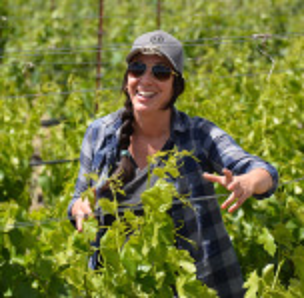
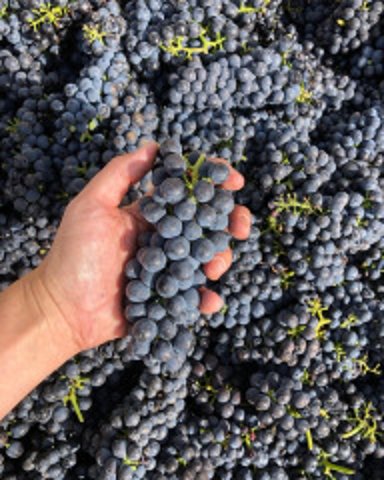
Brooke Roberston, Harvest at SJR Vineyards 2019
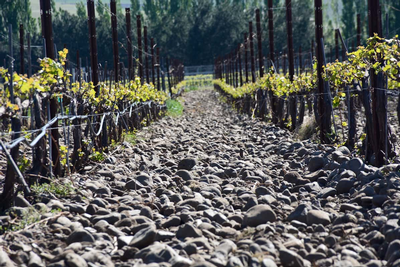
Rotie Rocks Estate Vineyard
Rhône Grapes in Washington
While California’s historic Rhône plantings predate the commercial Washington wine industry,8 there was varietally labeled Rhône wine made in the state as early as 1969 (Grenache rosé). While cold-tender Mediterannean varieties (especially Grenache and Mourvédre) can struggle with winter damage, Syrah’s home in the Northern Rhône is more continental,9 making it ideal for Washington vineyards. Mike Sauer, owner of Red Willow Vineyard in Yakima, planted the first Washington Syrah in 1986 using budwood that originated at Joseph Phelps.10 Eight years later, the Phelps (or Espiguette) Syrah made its way to Walla Walla, migrating south to Milton-Freewater shortly thereafter. There are many beautiful local expressions of Grenache, Mourvédre, Viognier, and other Rhône grapes, but this is the story of one grape and one place.
Rocks District Chateauneuf du Pape
The Rocks District of Milton-Freewater
The title of this piece comes from the cellar of Edmunds St. John. A member of the Peyraud family from Bandol, Mourvédre royalty, was tasting wine with Steve Edmunds. He came to a glass of Mourvédre, his eyes rolled back in his head, and all he could say was, “la terre parle.” Great terroir speaks, and the wines of the Rocks District speak loudly. The rocks that give it its name are alluvial cobblestones deposited by the Walla Walla river ages and ages ago. It was these cobblestones that drew a young Christophe Baron to plant Syrah in Milton-Freewater in 1997. He was reminded of the rocky terroir of famous Châteauneuf-du-Pape vineyards like La Crau. The AVA was established in 2015, covering a petite five square miles of rocky valley floor.
These free-draining, poor soils tame the inherent vigor and verve of Syrah, although the wines are anything but domesticated. The French have a term, sauvage (wild), that is frequently applied to the furry, sanguineous Syrahs of Cornas or St. Joseph. Wines from the Rocks District have sauvage in spades. They can smell like iron, or dry-aged beef, or creosote, like venison roasted on a campfire. Their texture, often buoyed by a high ph, is as soft and layered as a well-made bed, leading to a ferrous, saline[11] finish. Rocks District Syrah is a bear in a blanket, waiting for Goldilocks. The best examples can age for a decade or more, but they drink surprisingly well on release. Wine Spectator has called the Rocks District of Milton-Freewater “the most distinctive AVA in the United States.” I look forward to hearing what it has to say in the coming years.
[1] American Viticultural Area
[2] The Hospice du Beaune is arguably the most important annual wine auction in France.
[3] And other Rhone grapes. Alban’s selections of Syrah, Grenache, and others collected during his travels in France remain highly sought after.
[4] Anyone interested in a more detailed history of these grapes should find Patrick Comiskey’s American Rhone
[5] Waterlogged, virused vines struggled to ripen and the wine finished below 12% abv.
[6] The Estrella River selection remains one of the most planted Syrah clones in California.
[7] Not everyone in the Rhone Ranger camp was pleased with the French comparison. Sean Thackrey, who appears in Merriam Webster under “iconoclast”, famously complained that copying the French would stifle creativity and their Californian identity, to which Randall Grahm replied, “Sort of a coat-tails du Rhone?” See Randall’s blog for more wine geek witticism.
[8] Though many of the early home winemakers planted Cinsault (called Black Prince), one of the varieties allowed in Chateauneuf-du-Pape. There is still a planting of Cinsault in the Rocks District from 1930!!!
[9]When asked when he likes to pick, Gerard Chave answered, “Ideally before it snows.”
[10]I like to think of this wine synchronicity as an ouro-pour-os, or a wine glass drinking itself.
[11] Unbuffered potassium is a possible culprit.


